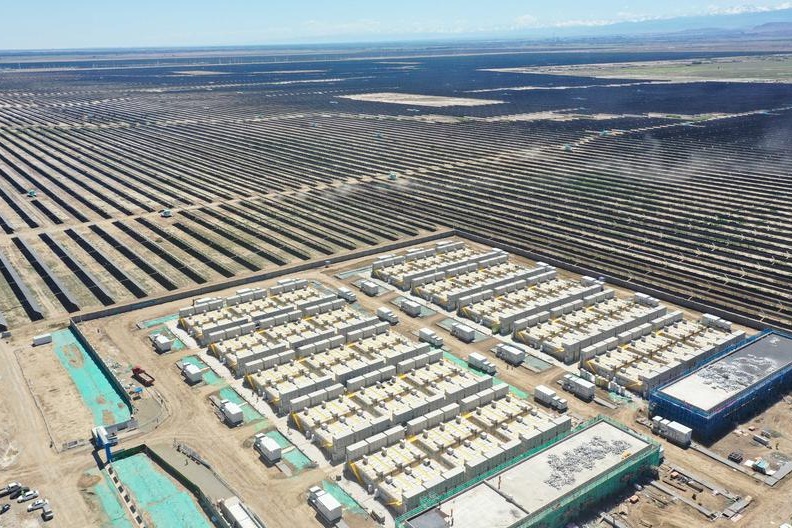Growing appetite for GM foods

Genetically modified plants are becoming increasingly accepted and supported by most countries
Research on genetically modified organisms has come a long way in China. Even though the study and development of biotechnology in China is relatively new, China's genetically modified technologies are not far from being industry leaders.
The economic and social benefits are the main drivers of the industry. The industry will provide new ways to solve China's food security problems and development of genes transfer foods will improve food quality and help the country's supply catch up with demand, bringing food prices down to more affordable levels.
|
 ? ?
|
With its huge potential, the genetically modified food industry is one of the most important drivers of sustainable development. I think that is the reason why genetically modified plants are being increasingly accepted and supported by most countries.
Since the initial efforts to produce commercially viable genetically modified technology in 1996, the industry has leveraged economic benefits of more than $50 billion (38 billion euros). The latest evaluation research on the influence of genetically modified crops shows that those benefits mainly come from the reduction in growing costs and increased grain production.
Another advantage is the saving in land requirements. If genetically modified crops were not planted, more than 626 billion square meters of land would be needed for planting. Therefore, genes transfer technologies are an important way to reduce the land needed for agriculture.
Feeding demand
China's great potential in genetically modified crop development lies in three areas:
First, ever since China began its rapid economic growth 30 years ago it has faced apocalyptic warnings that its huge population and rising wealth would lead to food shortages.
Some experts predict that in 40 years, the world population will grow by 50 percent. The pressure of the growing global population means it was inevitable that genetically modified technology would be used to improve the plants species used by humans.
Global warming, lack of water resources and desertification are also increasingly threatening food security. Hunger and malnutrition are threatening the world's poorest people. At the same time, with industrialization and urbanization, the amount of planted land we can use is decreasing. Traditional agricultural technology cannot solve these problems. Only the new biotechnologies combined with traditional agricultural techniques can overcome these challenges.
China has the largest population in the world. However, the grain yields in China have not been increasing to match the growing population. The country's top priority is to find a solution to the problem of feeding its enormous population.
Only technological innovation and application can help ease the demand on resources, reduce environmental pollution, safeguard the nation's food security and increase the supply of agricultural products.
China has made major achievements in discovering important genes and cultivating new genetically modified agricultural products. There is a huge potential for the industry in the future.
Taking the lead
Second, China is one of the countries at the forefront of research and development in genetically modified products.
Since 1997, when the Chinese government approved the research and development of commercial genetically modified cotton for the first time, the insect-resistant, trans-genie cotton plants have been planted extensively by farmers. According to research by the rural policies center of the China Agricultural Science Institute, 67.6 percent of the cotton planting acreage is insect-resistant trans-genie cotton plants and more than 7 million farmers benefit from planting trans-genie cotton. For the past 12 years, genetically modified cotton plants have provided 40 billion yuan (4.6 billion euros) in economic benefits.
Chinese technologies in genes transfer rice also have a leading role and one type of genetically modified corn, developed by Fan Yunliu, a fellow of the China Agricultural Science Institute, has huge market potential.
The Chinese government is considering putting genetically modified corn and rice into commercial production. If planted, the growing of genetically modified rice would benefit 110 million farmers, adding $100 to the net income of each household.
China has launched a big project to cultivate new genetically modified plants with the purpose of obtaining a series of projects with application value and autonomous intellectual property rights. This project is to develop new genetically modified genes that produce increased yields of high quality plants that are pest-resistant.
Laying foundations
Third, China is creating more opportunities for the development of genetically modified food. In accordance with international norms and China's current situation, China has established a new management system and regulations for genetically modified food industry, paving the way for China to build up its genetically modified food technologies.
China has developed a regulatory system, based on the Regulations on Administration of Agricultural Genetically Modified Organisms Safety and the attached rules, which established 62 technical standards on gene transfer bio-technology.
The Ministry of Agriculture also set up the Agricultural Genetically Modified Organism's Safety Commission and the National Technical Committee for Standardization of Biosafety and 35 test centers approved by the Ministry of Agriculture.
In 2006, China listed genetically modified organism cultivation in the National Outline for Medium and Long Term Science and Technology Development and issued favorable national policies to promote the research and development of genetically modified organisms.
In 2009, the State Council proposed to make the biotechnology industry a new national strategic industry.
In 2010, the a key document on improving farmers' livelihoods said the government should carry out a major science and technology project to create new crop varieties using gene transfer technologies, speed up agricultural biotechnology innovation and application and pay close attention to developing the important intellectual property value of genes and biological variety.
Chinese consumers still have misgivings about gene transfer foods, misled by some unscientific opinions and information. This mistrust is not helpful for the commercialization of bio-scientific technologies.
The Chinese government adopts a thorough and clear set of policies to review the safety of genetically modified food. It reviews and approves genetically modified food research and production applications very strictly. These genetically modified foods can only be sold after obtaining approval from the government.
For example, Chinese pest-resistant genetically modified rice was tested for 10 years. Chinese authorities approved the rice only after certifying that it was as safe as traditional rice in every respect.
The author is a scholar at China Agricultural University.
Today's Top News
- EU betraying its proclaimed principles: China Daily editorial
- Visit highlights resilient, dynamic and forward-looking China-Spain partnership
- WIPO: China retains its position as the global leader with 1.8 million patent applications
- Xi sends congratulations to 20th theory seminar between CPC, CPV
- China, Spain to build more strategically resilient, dynamic, internationally influential bilateral ties: Xi
- Xi holds welcome ceremony for Spanish king






























